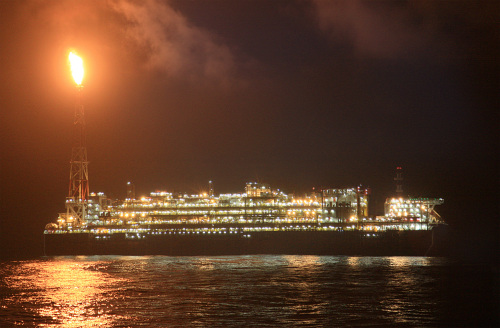Shipbuilding, steel and liquefied crystal display industries which have built up an oversupply thanks to aggressive investment in facilities are bracing for major restructuring next year.
With the European debt crisis likely to carry on or even worsen next year, some companies are already on the verge of shutdown.
Market analysts say the shipbuilding sector faces the greatest peril with competition running to extremes after companies mushroomed during the 2007-2008 market boom.
Adding to the woes is dried up funding from European financial institutions that do a lot of ship financing.
China’s shipbuilding volume last year, which accounts for 38 percent of the global production, jumped 170 percent from a year ago, according to Samsung Securities.
Prices of bulk carriers and tankers, key vessels on Chinese shipyards, have continued to fall.
“There is an undeniable oversupply of ships. Shipbuilding and shipping industries are to undergo major restructuring,” Um Kyunng-ah, an analyst at Shinyoung Securities, said in a report.
“The three Asian countries’ capacity to build merchant vessels will fall by 40.7 percent, and Korean shipbuilders by 34.4 percent.”
Um said the struggling shipbuilders will be weeded out within two years if the global recession stretches out, unfolding situations favorable for large companies that are competitive in areas other than shipbuilding.
Several large shipbuilders have turned to offshore plants, but small and medium-sized companies don’t have the option.
Sungdong Shipbuilding and Marine Engineering, the world’s No. 8 in terms of order backlog and Korea’s largest unlisted shipbuilder, posted losses of 141.3 billion won in 2009 and 465.3 billion won last year.
“The economic slump could lead to a cutback in new orders, cancellation of orders and delays in deliveries,” said Kang Sung-bu, chief of bond analysis team at Tongyang Securities.
“Companies that have already used up their advance payments will find it hard to keep up with their cash flow needs.”
Steelmakers also see a bleak outlook, with some already seeing their credit ratings lowered.
“The growth of global steel demand will slow down next year. We will see a growing need for steel sector restructuring in the United States and Europe as well due to an excess of facilities,” said Park Hyun-wook, a researcher at HMC Investment Securities.
Declining credit ratings are proof to the deteriorating profitability and financial structures of steelmakers.
US Steel, Nippon Steel Corporation and JFE Steel have seen their credit ratings go down one or two steps since 2008.
Standard and Poor’s downgraded POSCO’s credit rating from A to A- in October, maintaining a “negative” outlook for the steelmaker. Moody’s revised Hyundai Steel’s Baa3 rating outlook from “stable” to “negative.”
The fiscal quandary in Europe and property regulation in China will draw out the decrease in steel demand, dealing a blow to companies that supply more to builders rather than automakers.
“The European fiscal crises are not going to be resolved soon, and market prospects are opaque through the latter half of next year. Some companies say it is harder for them that it was during the 2008 financial crisis,” said Kim Joo-han, senior researcher at the Korea Institute for Industrial Economics and Trade.
“Because many Korean steelmakers are run by their owners, they are inclined to choose production cuts over mergers and acquisitions. The timing of the restructuring depends on how long the recession lasts.”
According to a report by Daewoo Securities, LCD manufacturers worldwide were running only about 70 percent of their facilities in the three months to September due to sluggish demand for LCD television sets in advanced economies.
“Korean companies expanded investment for no good reason last year. Restructuring in the LCD industry is unavoidable,” Kim Sung-in, IT analyst at Kiwoom Securities, said.
It was reported last month that the Taiwanese government was twisting LCD makers’ arms to restructure themselves as they couldn’t afford to extend the terms of their bank loans.
LG Display reported a third-quarter operating loss of 492.1 billion won, suffering losses for four consecutive quarters. The LCD division of Samsung Electronics is also highly likely to run into red figures this year.
Large companies can make up the slow LCD sales with semiconductors and smart gadgets, whereas small and medium-sized LCD makers and parts suppliers can’t.
By Kim So-hyun (
sophie@heraldcorp.com)








